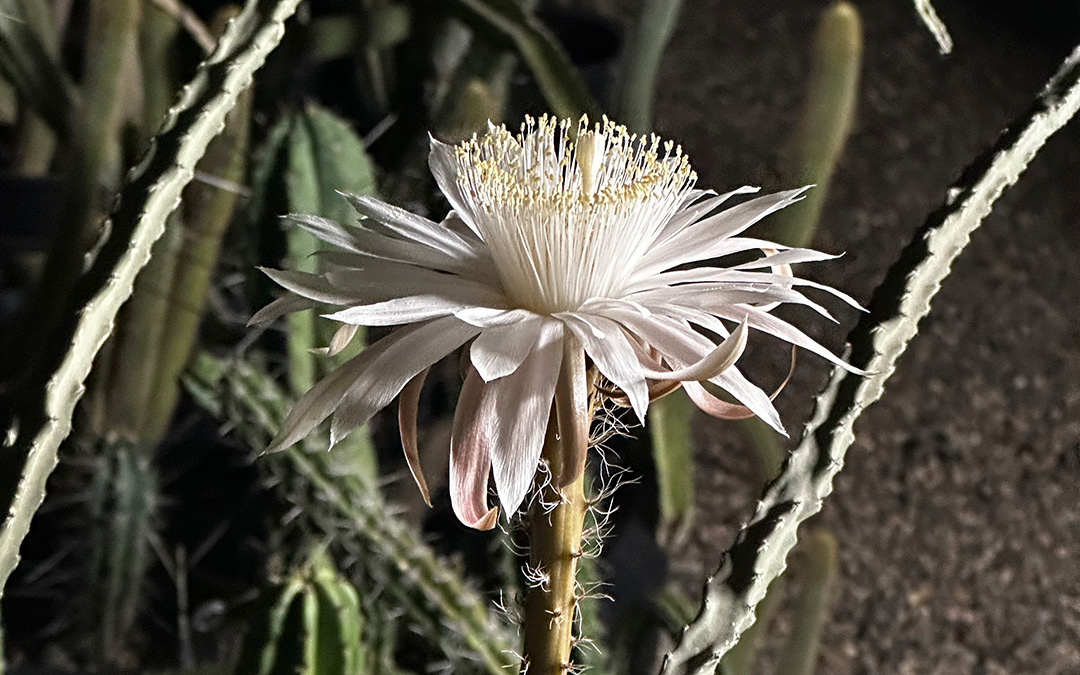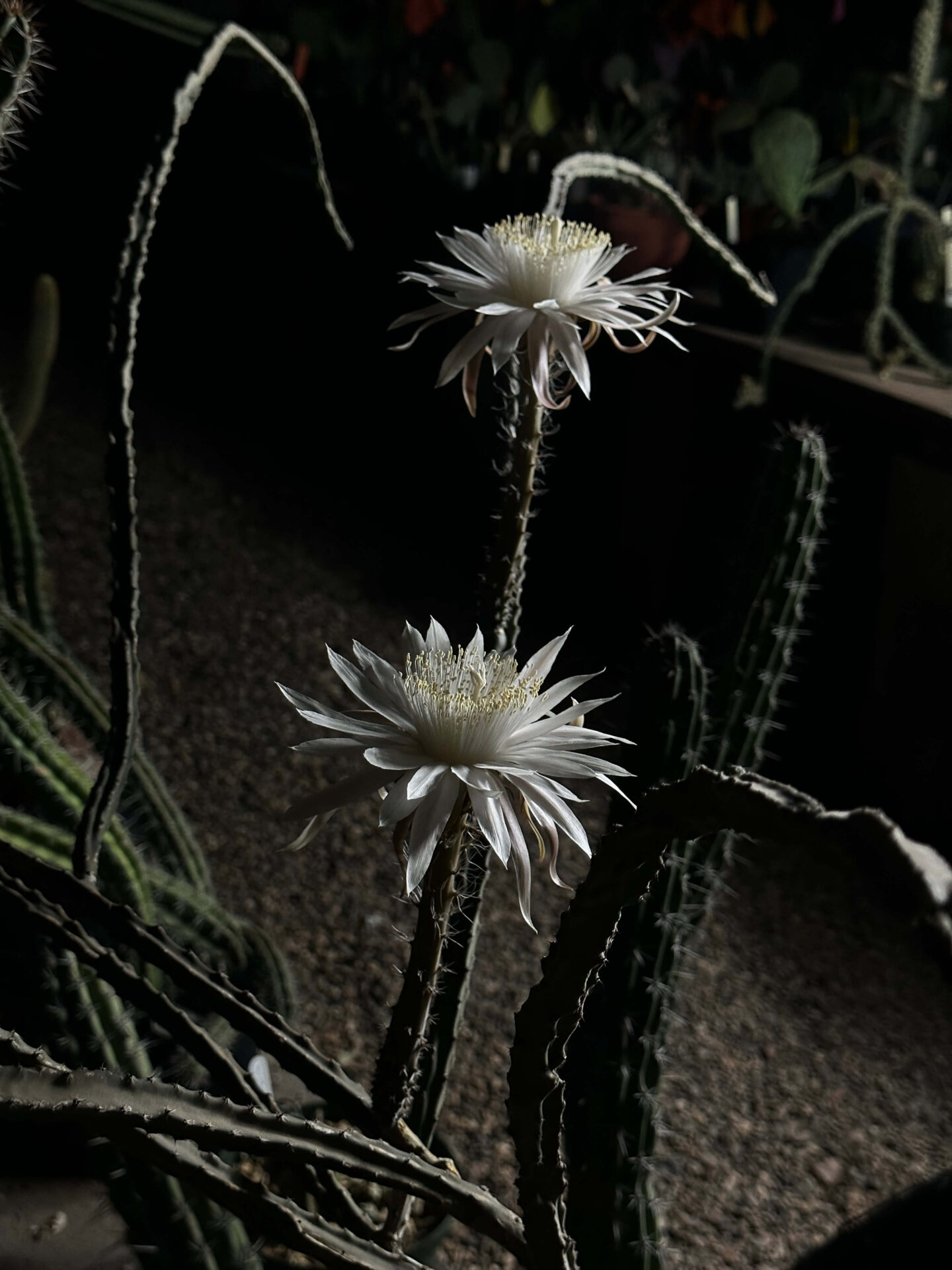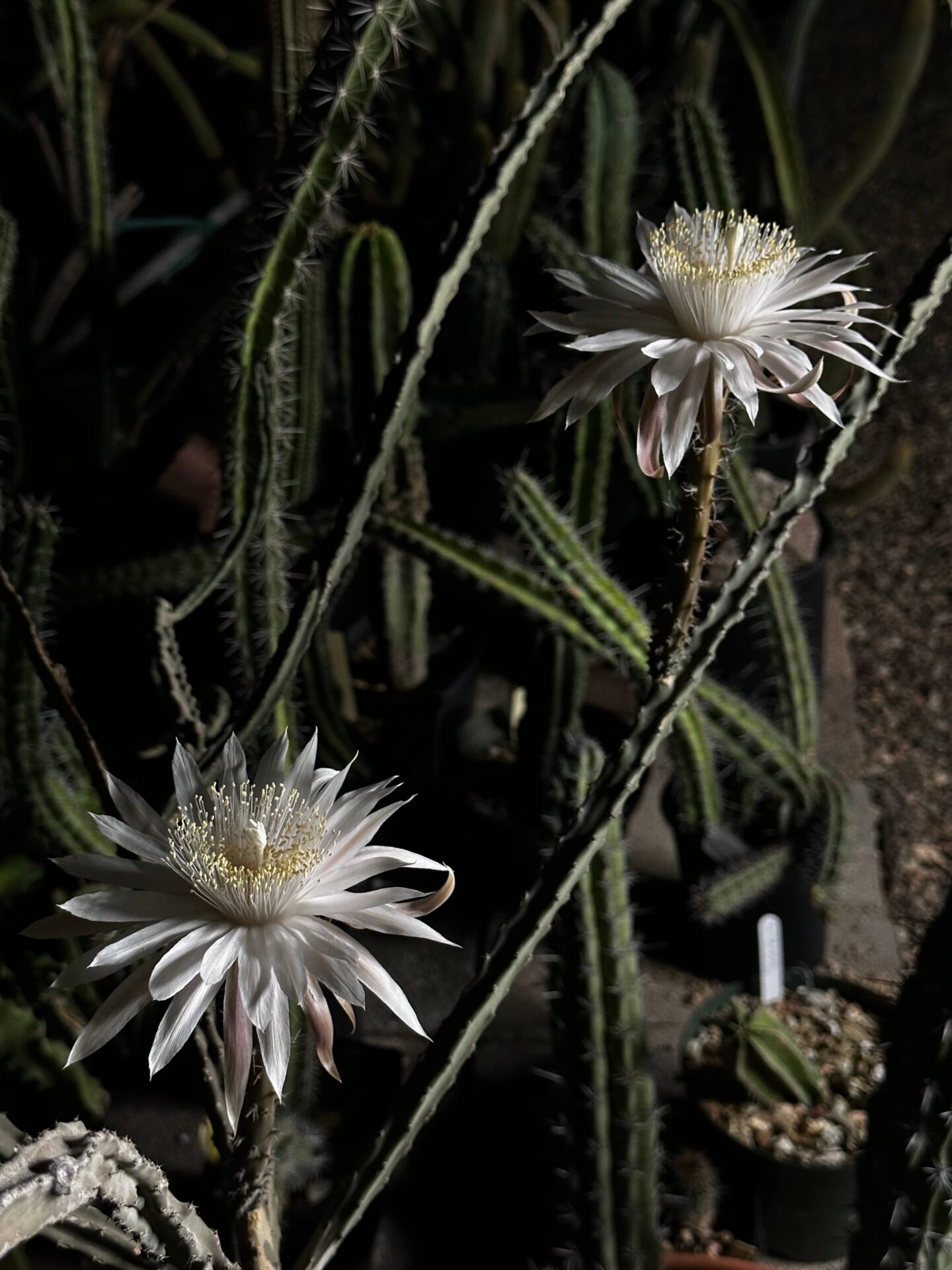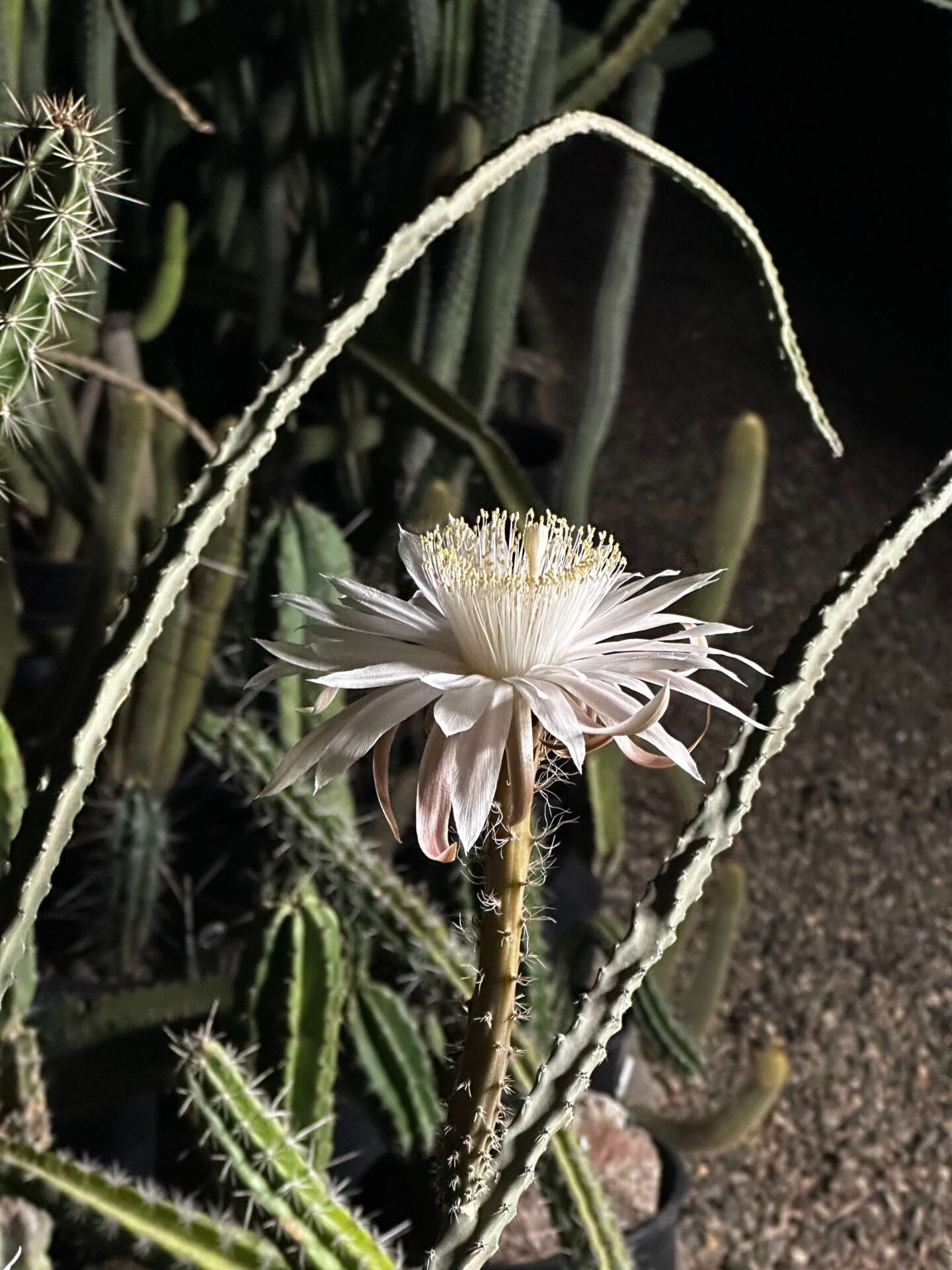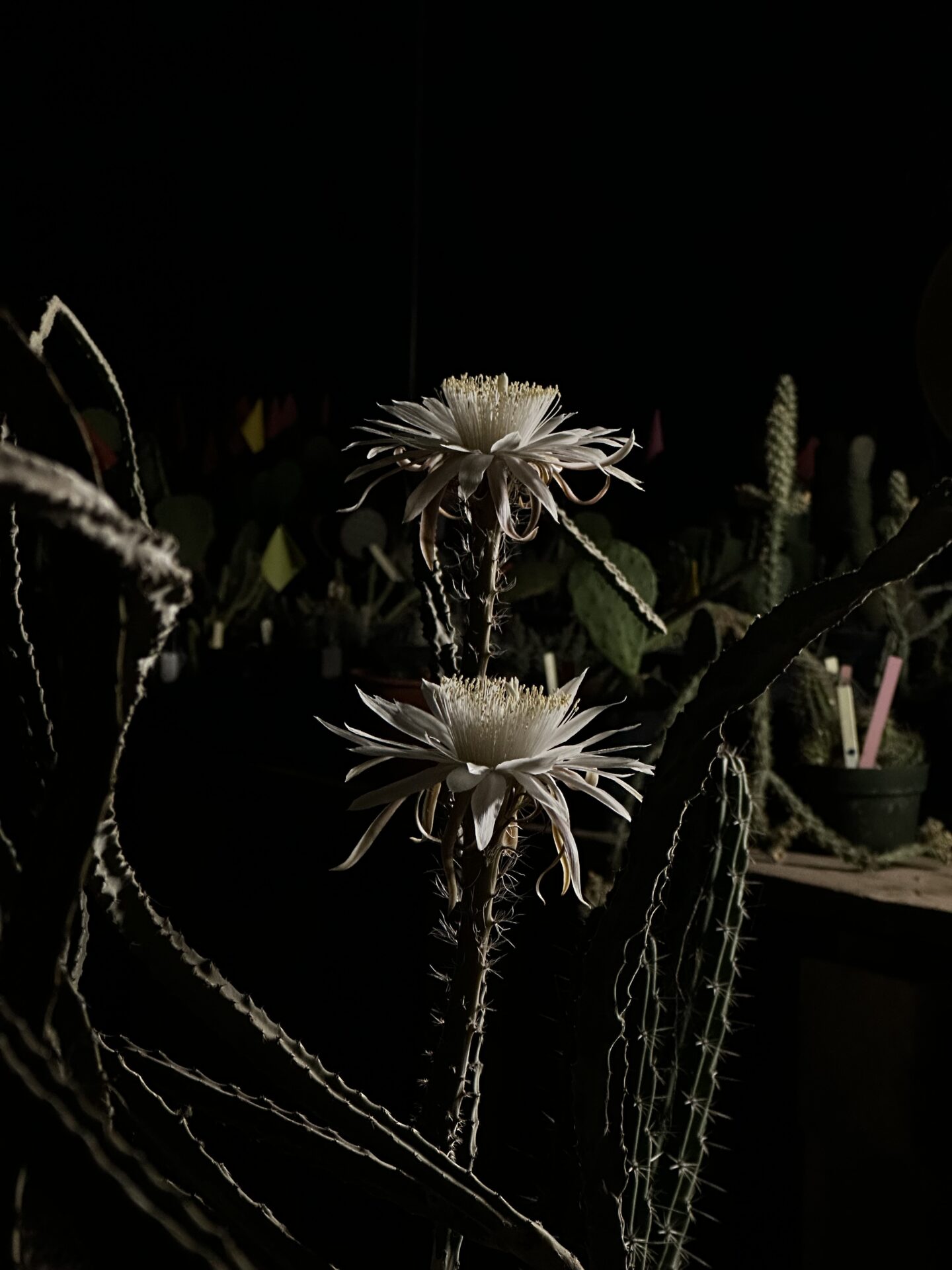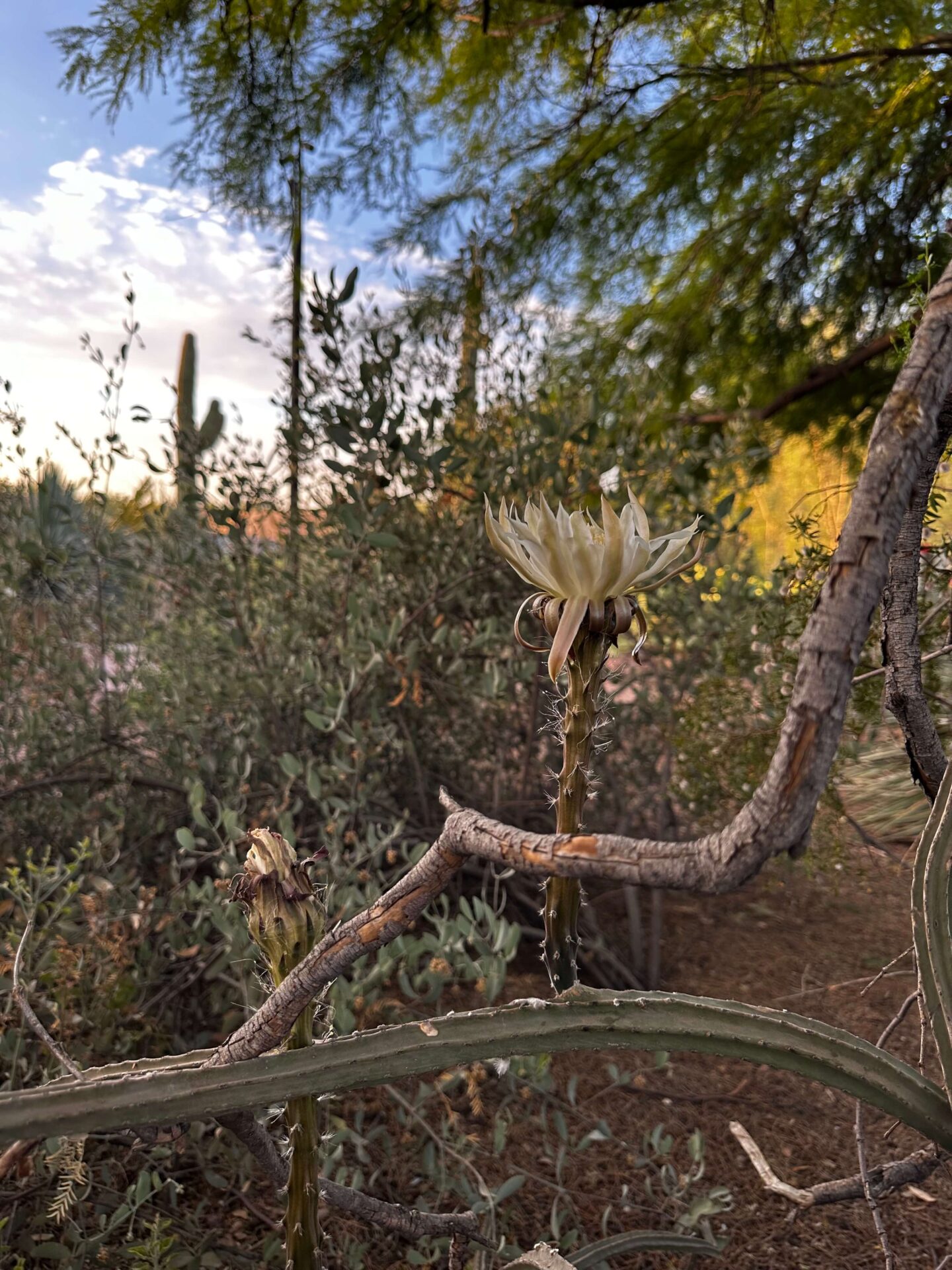In its native desert Southwest range, an elusive cactus grows under creosote bushes, ironwoods and other desert shrubs. For most of the year, the twiggy-looking cactus is unrecognizable, looking like dead grey sticks.
But for one summer night, the queen arrives, donning a white gown so that her petals can reflect the moonlight and attract nighttime pollinators.
Meet the Arizona Queen of the Night (Peniocereus greggii).
The plant is a tuberous rooted cactus with white, nocturnal and fragrant flowers. The Queen of the Night typically blooms en masse and once a year in June or July, opening their flowers at night and closing early the next morning.
Witnessing the Queen’s flowers is somewhat of a fairy tale.
In June, the Garden captured a time lapse of two flowers ready to bloom in the Garden’s shade house. This particular Queen of the Night (Peniocereus greggii var. transmontanus) is a subspecies.
The cactus are pollinated by the hawk moths (Sphingidae), a fast-flying insect with a long proboscis, or elongated mouthpart. In order to attract hawk moths, Queen of the Night cactus use a few strategies. These cactus will often bloom all at once to increase its chances of pollination. And it produces a sweet fragrance that hawk moths can smell from afar.
It took about a month for the Queen’s flowers to fully develop and finally opened the night of June 16.
Check out the Garden’s time lapse, one of our first videos capturing how desert plants bloom.
